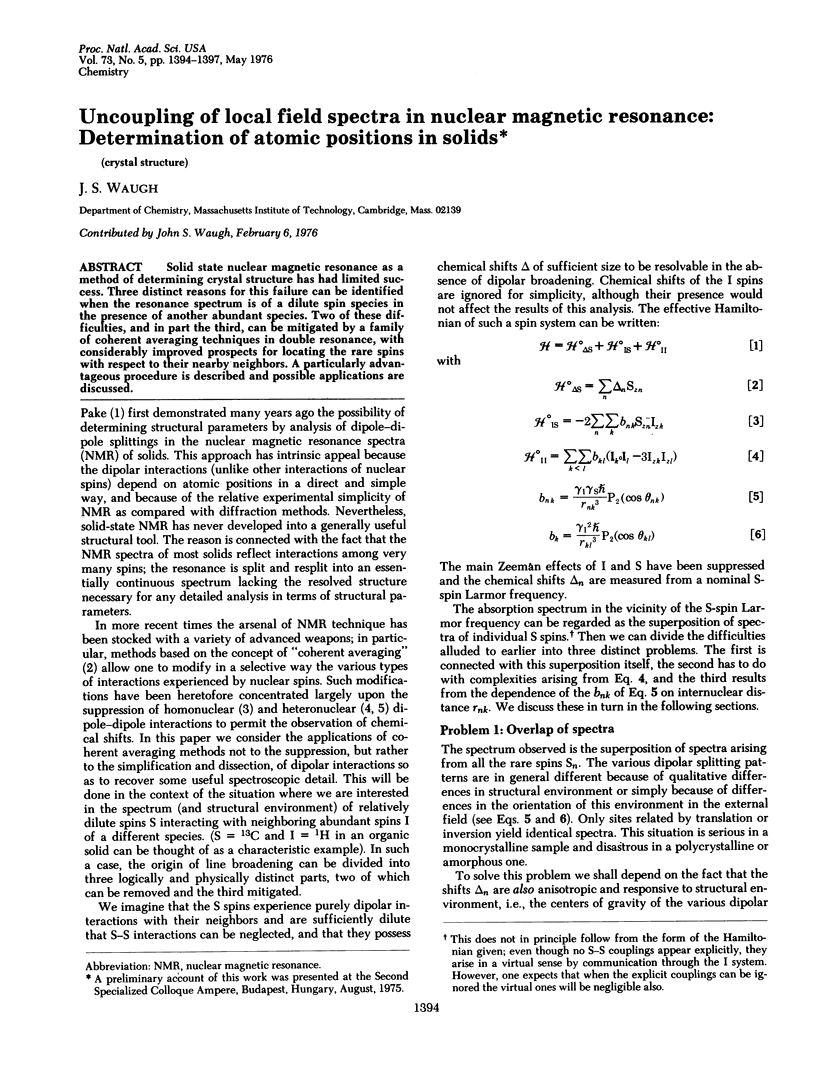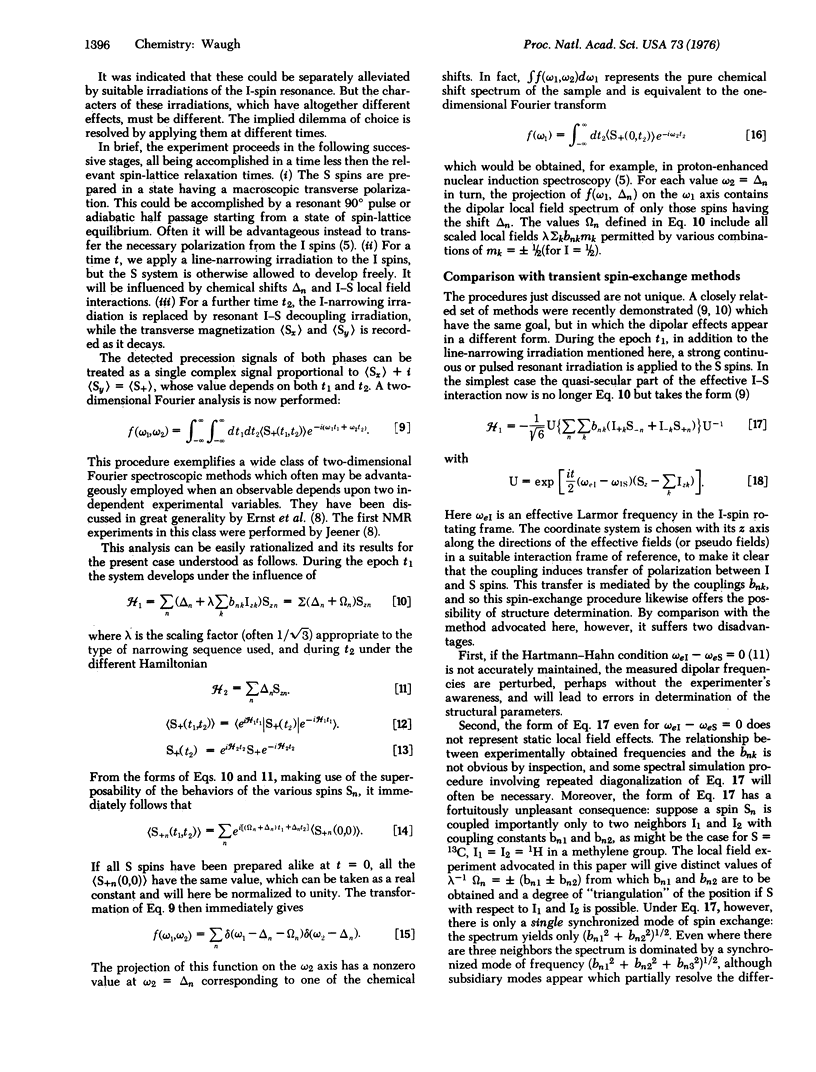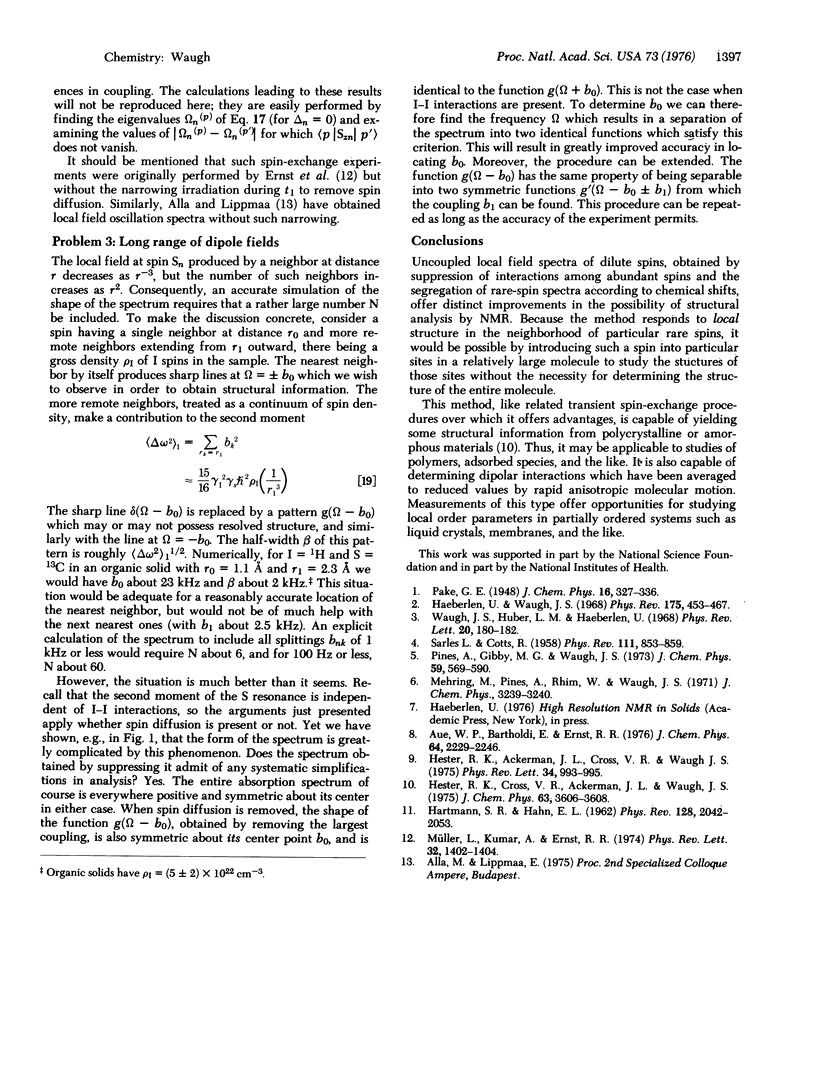Abstract
Solid state nuclear magnetic resonance as a method of determining crystal structure has had limited success. Three distinct reasons for this failure can be identified when the resonance spectrum is of a dilute spin species in the presence of another abundant species. Two of these difficulties, and in part the third, can be mitigated by a family of coherent averaging techniques in double resonance, with considerably improved prospects for locating the rare spins with respect to their nearby neighbors. A particularly advantageous procedure is described and possible applications are discussed.
Full text
PDF





